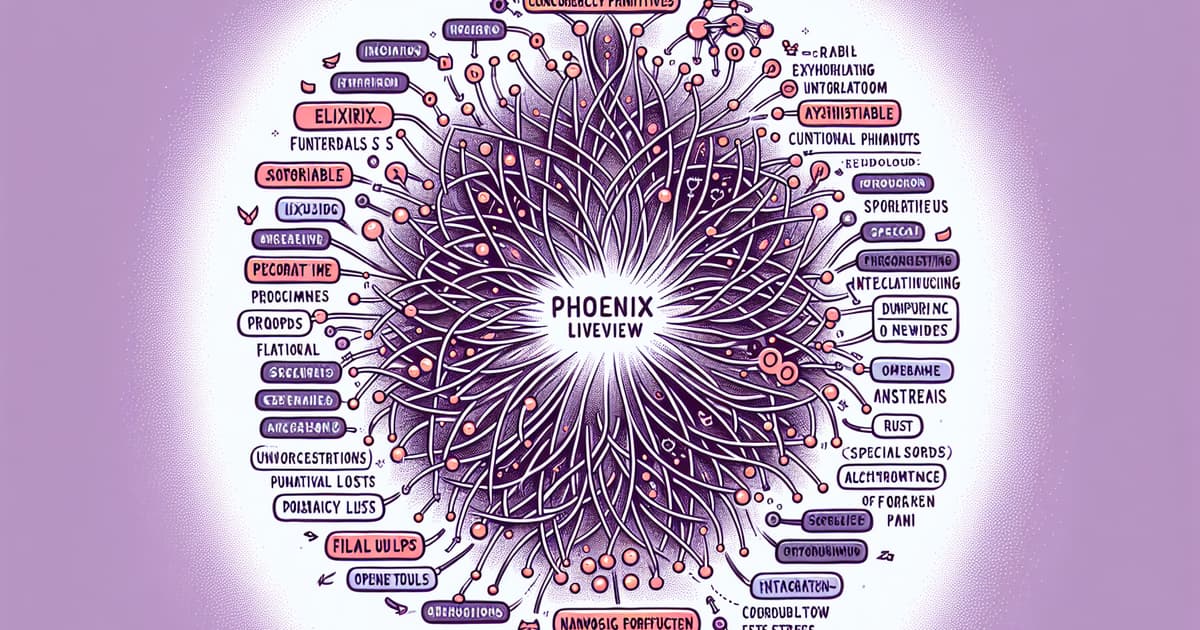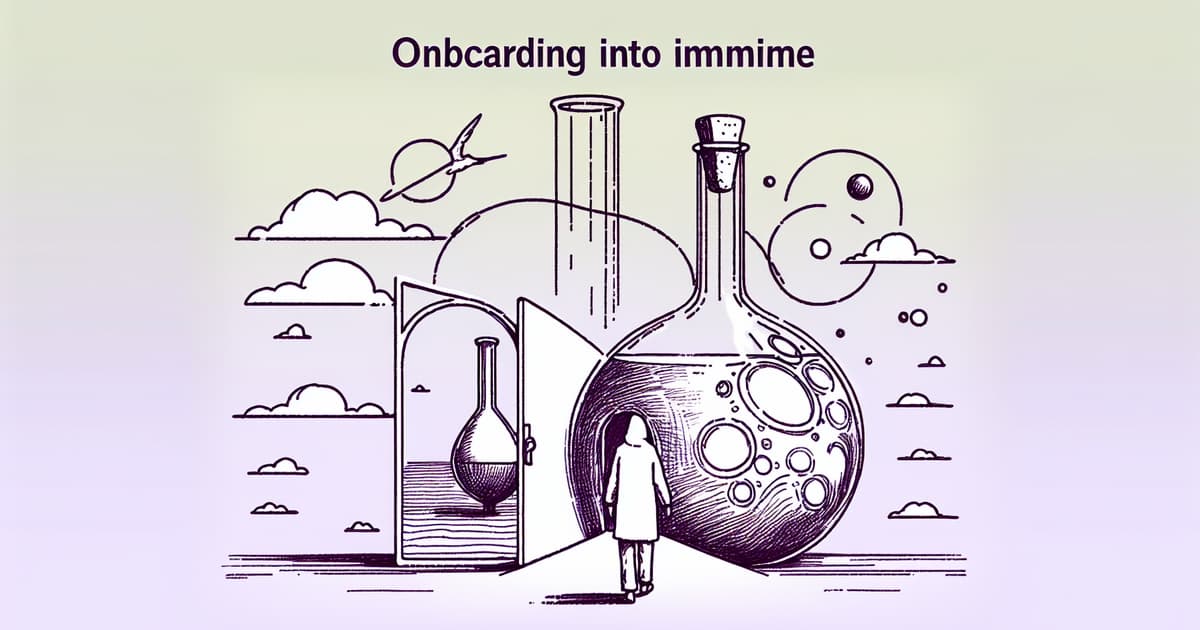We can't find the internet
Attempting to reconnect
Something went wrong!
Hang in there while we get back on track
Phoenix LiveView

Phoenix LiveView has become a game-changer in the world of web development by providing a seamless way to build interactive, real-time applications without heavy reliance on JavaScript. By leveraging Elixir's concurrency primitives and functional programming paradigms, LiveView enables developers to handle client-server interactions efficiently, offering benefits such as low-latency user experiences and reduced complexity in codebases. Key features include real-time file uploads, dynamic list management using Streams, and integration with powerful tools like SortableJS and OpenAI Chat APIs for enhanced functionality. LiveView also supports seamless integration with static and dynamic HTML elements, providing hooks for custom JavaScript logic, and advanced capabilities such as asynchronous task management and network optimization. Furthermore, its compatibility with tools like Rust and Prometheus ensures that LiveView applications can push performance boundaries while maintaining simplicity and scalability.
One of the standout aspects of LiveView is its ability to leverage the BEAM's soft real-time capabilities, which allows for consistent low-latency responses. This is particularly evident in use cases like real-time search engines, interactive charts, and live video and audio streaming. The LiveView ecosystem continues to evolve with contributions from the community, including tutorials on combining LiveView with contemporary frameworks like Svelte, and innovative projects like building AI-powered components and game development. With ongoing enhancements and community-driven resources, Phoenix LiveView is well-positioned to remain a leading solution for modern, scalable web applications.
Developers have reported significant productivity gains and simplified workflows when using LiveView for scenarios ranging from dynamic form management to complex, data-driven applications. The introduction of features like live_session for organized authorization, asynchronous operations with start_async, and global state management using PubSub further extend its capabilities. LiveView's continuous improvements, driven by its active community and core team, aim to make it even more robust and versatile for various application needs, enabling both seasoned developers and newcomers to harness its full potential.

Exploring Phoenix LiveView through a Planning Poker App
Scorpil shares insights on building an interactive web application using Elixir's Phoenix LiveView.

Comparing Web Development with Elixir/Phoenix and Ruby on Rails
In this episode, Owen Bickford and Dan Ivovich delve into the nuances of building web applications with Elixir and Phoenix compared to Ruby on Rails, discussing the pros and cons of each framework.

Elixir's Practicality and Potential Beyond Web Development
Jason Stiebs touched on the practicality and power of Elixir, especially for web development and beyond. He recognized Elixir's leverage as an efficient, production-ready language with a solid ecosystem including Phoenix and observed a relative stability in his tech stack over years. He advocated for exploring Elixir's capabilities outside the traditional web domain, citing examples from machine learning to 3D modeling.

Understanding the live_session Macro in Phoenix LiveView
Herminio Torres discusses the live_session macro in Phoenix LiveView for organizing authorization rules across different endpoints.

Optimizing Map Performance with Elixir and Leaflet.js
Aziz Abdullaev discusses a practical approach to optimizing the performance of a map in a web application using Elixir, Phoenix LiveView, and Leaflet.js. The author details the issues encountered when attempting to render over 12,000 map markers and how they solved these challenges.

Integrating Rust with Elixir for Enhanced Performance
Jason Stiebs, a member of the Phoenix Core Team, discusses how Rust and Elixir can be effectively combined using the Elixir Rustler package to enhance performance, specifically through an image processing library in Rust. The conversation includes insights into the usage of NIFs (Native Implemented Functions) and the ease of using Rustler, providing a robust solution for high-performance requirements in Elixir applications.

Migration from React to LiveView for Enhanced Performance
This episode explores Tim Gremore's experience in significantly improving the performance of a React application by migrating it to a LiveView rendered page, leading to better scaling and user perception.

Exploring AI Integration in Elixir with Sean Moriarity
In episode 154 of the Thinking Elixir Podcast, the hosts discuss the intersection of AI and the Elixir programming language with special guest Sean Moriarity.

Exploring Elixir's Interaction with WebAssembly through Orb
This episode of the Thinking Elixir Podcast discusses the Orb project, created by Patrick Smith, which is an Elixir DSL for WebAssembly and how it can be integrated into LiveView for improved user experiences.

Theo Harris on the Onboarding Process and Challenges in Elixir
Theo Harris shares his insights on onboarding into Elixir while working for Alembic.

Exploring the Future of Elixir with Hugo Baraúna and Lucas San Roman
In the Elixir Wizards podcast episode, Hugo Baraúna of Elixir Radar and Lucas San Roman of Felt discuss the future of the Elixir community, its culture, long-term stability, innovative projects, global connections, and the upcoming advancements in collaboration and possibly a new type system.

Discussion on Elixir's Future and LiveView with Sophie DeBenedetto
Sophie DeBenedetto discusses educational initiatives in the Elixir community and LiveView's impact on Elixir's future during a podcast episode.

Exploring Machine Learning's Evolution with Elixir Featuring Sean Moriarity
Sean Moriarity discusses the impact and future of Elixir in machine learning (ML) and artificial intelligence (AI), detailing the various technologies involved and highlighting the advantages of using Elixir for ML applications.

Discussions on Phoenix and Its Future Developments
Phoenix core team members Chris McCord and Jason Stiebs discuss key updates and future prospects of the Phoenix and LiveView with Elixir Wizards hosts Sundi Myint and Owen Bickford.

Building a League of Legends Probuild with Elixir
Baptiste Chaleil discusses his experience creating a Probuild for League of Legends using Elixir, Phoenix, and LiveView technologies.

Exploring Stenography for Coding in Elixir
In this episode, Paul Fioravanti discusses his experiences using stenography for programming in Elixir.

Beam Radio Podcast: Bruce's Adventures and Elixir Resources
This episode features various resources and announcements for Elixir developers, including a mention of the upcoming GigCityElixir conference.

Reflecting on Chris McCord's LiveView Keynote with the BeamRadio Team
The BeamRadio team discusses Chris McCord's keynote on LiveView from ElixirConf 2022 and offers a discount code for CodeBeam tickets.

How to Tailor Phoenix Generators for Specific Project Needs
Mark Ericksen discusses the lesser-known feature of customizing Phoenix generators to suit specific project patterns and styles, making the process of adding new components to an application smoother and less error-prone.

Summarizing ElixirConf 2023 Lightning Talks
Various speakers present diverse topics related to Elixir at ElixirConf 2023 Lightning Talks.

Best Practices for Asynchronous Task Management in Phoenix LiveView
Chris Gregori discusses the challenges and solutions for managing asynchronous tasks in Phoenix LiveView to create a responsive and resilient user interface.

Understanding Credo for Elixir Code Analysis
In this episode, we explore Credo, an Elixir package for static code analysis, to maintain consistency and improve code quality.

Understanding the appropriate use of handle_params callback
Herminio Torres discusses the use of the handle_params callback in Phoenix LiveView.

Switching from React to LiveView for Performance Gains
Tim Gremore discusses the transition from a React Single Page Application (SPA) to Phoenix LiveView when developing Birdseye, a personal task management tool. Faced with performance issues that hindered scalability, the team embarked on a two-day exploration of LiveView. Convinced of its potential, they successfully adopted LiveView, which resolved the performance problems associated with handling a large number of tasks in React.

Integrating AI Technologies with Elixir for Application Development
Charlie Holtz delivered a talk on integrating artificial intelligence with Elixir in application development, focusing on three key patterns that frequently arise when creating these types of apps.

Integrating Automated Accessibility Testing in Elixir Projects
Andrew Moore shares his experience with automated accessibility testing using a tool developed at Launch Scout called Excessibility. This tool is integrated with Elixir's testing suite to analyze DOM snapshots for WCAG violations.

Building a Basic Phoenix LiveView Application
Mike Clark guides us through creating a basic Phoenix LiveView application that simulates a light controller with adjustable brightness.

Building an E-Commerce Application with Phoenix LiveView
Tyler Wray explores creating real-time web applications using Phoenix LiveView and Elixir with an eCommerce example.

Simplifying BEAM Clustering for Global Distribution
Jason Stiebs explores the advantages of running Elixir and Phoenix applications globally with minimal setup using Fly.io's integrated WireGuard networking for Erlang distribution and clustering.

Understanding LiveView's start_async Helper Function
German Velasco discusses the start_async/3 function introduced in LiveView 0.20 for executing arbitrary asynchronous operations within Phoenix LiveView.

Enhancing User Experience with LiveView Forms
Andrew Ek discusses how Elixir and Phoenix LiveView can be used to improve the experience of working with forms, emphasizing the importance of user experience and providing practical tips for form design and validation.

Understanding Code Shepherding in Elixir
Amos King delivers a talk on 'The Importance of Shepherding' at GigCityElixir 2023. He emphasizes the value of shepherding in software development.

Innovative Software Development with Managed Risk
Stephen Bussey presents on taking calculated risks in software development with a focus on Elixir. He discusses the importance of innovation, risk management, and provides insights into software architecture.

Improving Healthcare Outcomes with Elixir's Actor Model
Bryan Hunter discusses HCA's Waterpark, a powerful distributed system built with Elixir, focusing on its development and significant impact on healthcare.

Understanding and Optimizing Functional Data Structures in Elixir
Zack Kayser presents on reasoning about data structures and runtimes in Elixir compared to imperative languages. Kayser emphasizes the implications of working with immutable data structures and their efficiency in Elixir.

Enhancing Real-Time Interactivity with LiveView and User Experience Design
Zack Kayser and Beau Heubach, from Gaslight, discuss the integration of user experience (UX) principles with Phoenix LiveView to deliver seamless real-time features in web applications.

Introduction to LiveView in Phoenix for Rich User Interactions
Andrew Forward gives an engaging talk on utilizing LiveView within the Phoenix Elixir framework to create rich client-side experiences directly from the server, thus minimizing the need for JavaScript.

Real-Time MIDI Control with Elixir
Geoffrey Lessel demonstrates how Elixir combined with OTP can control MIDI devices in real-time, addressing its advantages and potential issues for musical applications, and shows Phoenix and LiveView for visualization.

Understanding Networking on the BEAM with Elixir
Andrea Leopardi presents insights into how the BEAM's architecture is particularly suited for network applications. He discusses the handling of TCP connections and the design patterns for building scalable and fault-tolerant systems.

Exploring Web Development with Elixir: A Javascripter's Journey
Roger Roelofs discusses his evolution as a web developer and his experience moving from JavaScript to Elixir's Phoenix and LiveView.

Implementation Challenges of an Interview Scheduler Using Phoenix LiveView
Karoline Lende shares her experiences as a new Elixir developer in creating an interview availability scheduler with Phoenix LiveView. She discusses the initial roadblocks, the iterative problem-solving process with her team, and the successful deployment of the feature.

Data-Driven Software Delivery Optimization with LiveView
Tom Calloway presents an early-beta LiveView application aimed at quantitatively optimizing software delivery processes, offering a detailed analysis beyond traditional Kanban by integrating comprehensive accounting of team activities and enabling A/B testing for technology and practices.

Improving Performance of Phoenix LiveView in Realtime Elixir Applications
Marlus Saraiva's talk covers optimizing server-client communication in real-time applications using Phoenix LiveView in Elixir.

Building Wordle in Elixir as a Learning Project
Theo Harris shares his experience of learning Elixir by building the game Wordle as an onboarding project at Alembic.

Integration of k6 Load Testing with Elixir's LiveView
Sebastian Göttschkes talks about integrating the k6 open-source load testing tool, developed by Grafana, with the Elixir ecosystem, particularly LiveView. He also invites suggestions for library improvements.

Bringing Machine Learning Capabilities into Elixir with Bumblebee
Jonatan Klosko presents Bumblebee, an Elixir tool that simplifies using pre-trained machine learning models.

Enhancing LiveView with Membrane for Realtime Media Processing
Lars Wikman, the founder of Underjord and a member of the BEAM Radio team, presents how the Membrane Framework can enhance LiveView with live video and audio capabilities. He discusses potential applications and the excitement of creating cool things by combining different inputs, transformations, and outputs.

Leveraging Elixir & Phoenix for Building Software in Auroville
Shankar Dhanasekaran speaks about using Elixir and Phoenix to create software for Auroville, a city of 50,000 people. He emphasizes the benefits of Elixir and Phoenix in managing complex, multi-service domains, and shares their journey of moving away from Drupal to Elixir, the adoption challenges faced, and the productivity gains. The talk also highlights the future potential of Elixir in the context of Auroville's development, such as the potential for cloud farming and machine learning.

Advancements and Capabilities of LiveView 1.0
Chris McCord discusses the evolution of LiveView into a full-fledged application development tool capable of complex operations like building Spotify-like apps.

Insights on Elixir Development and Learning Experience
José Valim presents a keynote speech on updates and the future of Elixir, including development and learning experience enhancements.
© HashMerge 2026